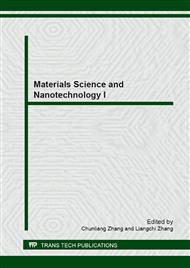p.469
p.473
p.477
p.481
p.485
p.490
p.496
p.500
p.504
Recent Progress on Controlled Dielectrophoretic Assembly of Carbon Nanotubes
Abstract:
Carbon nanotubes (CNTs) have drawn extensive research interest for a variety of applications in single electron transistors, field emission displays, interconnects, sensors, energy storage, composites, and many others due to their excellent electrical, mechanical, and thermal properties. One requirement for many of these applications is the need to integrate CNTs into various devices or circuits as functional components and different manipulation methods have been developed. This paper addresses the assembly of CNTs by dielectrophoresis (DEP) and reviews recent research progress of controlled assembly of CNTs. Totally six approaches are introduced in which different techniques including impedance measurement, optical induced DEP, floating electrode DEP, self-limiting resistor, fluidic assisted deposition, and real-time gap impedance monitoring of DEP are respectively used to control the yield of the DEP process. The advantages and disadvantages of these methods are analysed. The purpose is to help automating the DEP process of CNTs and other one-dimensional nanomaterials by presenting these advanced control techniques.
Info:
Periodical:
Pages:
485-489
Citation:
Online since:
December 2012
Authors:
Keywords:
Price:
Сopyright:
© 2013 Trans Tech Publications Ltd. All Rights Reserved
Share:
Citation:


